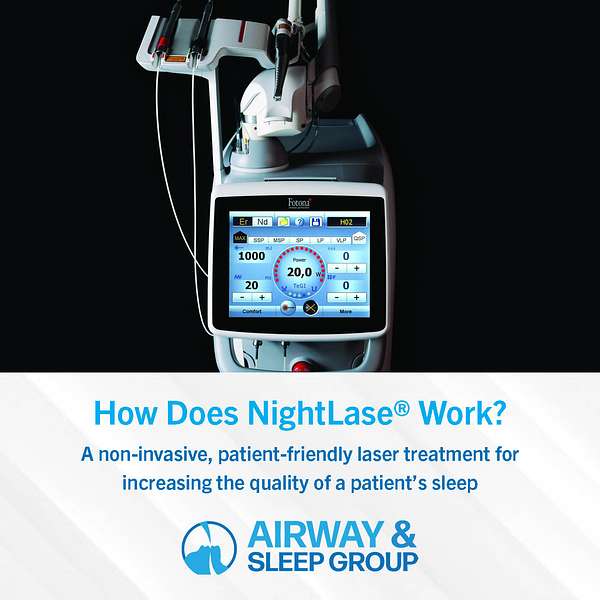
Airway and Sleep Group Podcast
Airway and Sleep Group Podcast
Fotona NightLase Therapy Helps Treat Pediatric Sleep Apnea
Ease The Effects of Sleep Apnea
Sleep apnea and snoring are two conditions that can significantly affect the quality of sleep in children. Instead of allowing patients to suffer through sleep-deprived nights, medical practitioners like us are turning to therapies like Fotona NightLase® to help treat pediatric sleep apnea.
What Is Fotona NightLase Therapy?
According to the company, “Fotona’s NightLase® therapy is a non-invasive, patient-friendly laser treatment for increasing the quality of a patient’s sleep. NightLase reduces the effects of sleep apnea and decreases the amplitude of snoring by means of a gentle, laser-induced tightening effect caused by the contraction of collagen in the oral mucosa tissue.”
How Does NightLase Work?
Nightlase uses a patented, high-performance ER:YAG laser modality to optimize the length of laser pulses to the mucus membrane that lines the soft tissue of the oral cavity, called the oral mucosa tissue. The laser penetrates deeply into the skin to create a thermal effect that increases the targeted membrane’s temperature without damaging the skin’s surface. This heating effect stimulates collagen contraction and tightens the tissues to prevent them from over-relaxing and obstructing the airway during sleep.
A full-course of NightLase generally requires three separate 30 to 45 minutes treatment within a six to eight week period. During treatment, the patient feels a warm and tingly experience in the throat, similar to the spray of warm water. There’s no downtime, and most patients experience no side effects other than an occasional mild sore throat or dry mouth. Your child can eat and drink normally immediately following appointments.
With NightLase’s effective and non-invasive treatments, your doctor or dentist can produce a change in sleep patterns. No chemical treatment or anesthesia is required. NightLase, however, isn’t considered an all-time cure for traditional sleep apnea. Depending upon their individual physiological issues, patients may still require the use of an oral appliance to achieve better sleep.
How Do I Monitor NightLase’s Effectiveness?
Following NightLase treatment, monitor the quality of sleep. Most patients report a reduction in sleep apnea and snoring. If you notice that these conditions have worsened or have not significantly changed, let us know. The effects of NightLase aren’t noticed immediately, and final results can last up to a year. If necessary, the treatment can be repeated.
Does My Child Qualify For NightLase Treatment?
Through an oral examination, Dr. Liliana Calkins, a specialist in orthodontics and craniofacial orthopedics at Airway & Sleep Group, can help identify what factors are causing your child’s sleep apnea or snoring.
If recommended, Fotona’s NightLase therapy can help reduce the effects of pediatric sleep apnea or the volume of snoring in pediatric patients by tightening soft tissues in the oral cavity. However, treatment depends upon the anatomical conditions causing these issues. For other conditions, like a tongue obstruction, alternative or additional treatment options may be recommended.
NightLase Therapy Treatments for Sleep Apnea at Airway & Sleep Group
Our goal at Airway and Sleep Group is to improve sleep disordered breathing by providing the latest technology to help pediatric sleep apnea in Northern Virginia families. If you’d like to learn more about Fotona’s NightLase therapy treatment for sleep apnea, contact Airway and Sleep Group at (571) 244-7329. You can also complete our easy online contact form, and we’ll get back to you shortly.